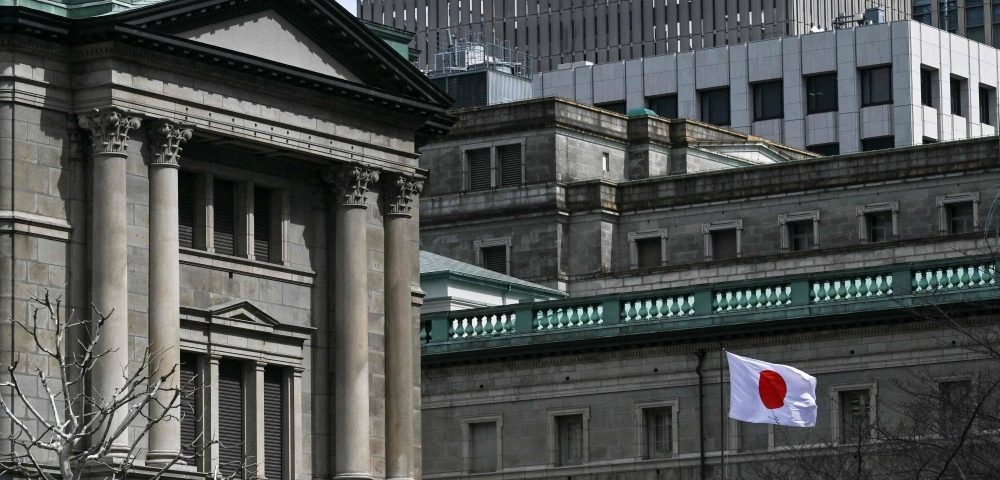
How to Use Balance of Trade Data: A Comprehensive Guide
29/07/2024
How the People’s Bank of China Influences Markets: A Comprehensive Guide
29/07/2024Introduction to the Bank of Japan (BOJ)
Overview of the Bank of Japan
The Bank of Japan (BOJ) is the central bank of Japan and plays a crucial role in the country’s economy. Established in 1882, the BOJ is responsible for issuing currency, implementing monetary policy, maintaining financial stability, and providing banking services to the government and financial institutions. This comprehensive guide will explore the history, structure, functions, and impact of the BOJ on the Japanese economy and the global financial system.
History of the Bank of Japan
Establishment and Early Years
The BOJ was established on October 10, 1882, during the Meiji era, a period marked by rapid modernization and industrialization in Japan. The creation of a central bank was part of the broader effort to stabilize the financial system, issue a uniform currency, and facilitate economic growth.
Evolution and Reforms
Over the years, the BOJ has undergone several reforms to enhance its functions and adapt to changing economic conditions. Key milestones include:
- 1942: The Bank of Japan Act was enacted, giving the BOJ a broader mandate to control the money supply and credit.
- 1997: A significant revision of the Bank of Japan Act granted the BOJ greater independence from the government and emphasized its responsibility for price stability.
Structure of the Bank of Japan
The Policy Board
The Policy Board is the highest decision-making body of the BOJ. It consists of nine members, including the Governor, two Deputy Governors, and six other members. The Policy Board is responsible for formulating monetary policy and ensuring its implementation.
The Governor and Deputy Governors
The Governor is the chief executive officer of the BOJ and represents the bank in its dealings with the government and other institutions. The Governor, along with two Deputy Governors, is appointed by the Cabinet and serves a five-year term, which can be renewed.
The Executive Auditors and Executives
The BOJ also has Executive Auditors and Executives who oversee the bank’s operations and ensure its activities are conducted in compliance with the law and the decisions of the Policy Board.
Regional Offices and Branches
The BOJ operates a network of regional offices and branches throughout Japan to facilitate its operations and gather economic information from different parts of the country.
Functions of the Bank of Japan
1. Monetary Policy
The primary function of the BOJ is to formulate and implement monetary policy to achieve price stability and support economic growth. The BOJ uses various tools to influence money supply, interest rates, and economic activity.
Monetary Policy Tools
- Interest Rate Policy: The BOJ sets the short-term interest rate, known as the uncollateralized overnight call rate, to influence other interest rates in the economy.
- Quantitative and Qualitative Monetary Easing (QQE): The BOJ conducts large-scale asset purchases, including government bonds and other financial assets, to inject liquidity into the economy.
- Negative Interest Rate Policy (NIRP): The BOJ has implemented negative interest rates on excess reserves held by financial institutions to encourage lending and investment.
- Forward Guidance: The BOJ provides guidance on the future path of monetary policy to influence market expectations and behavior.
2. Issuance of Currency
The BOJ has the exclusive authority to issue banknotes in Japan. It ensures an adequate supply of currency to meet the needs of the economy while maintaining public confidence in the currency’s value and integrity.
3. Financial System Stability
The BOJ plays a critical role in maintaining the stability of the financial system. It monitors financial institutions, provides liquidity support during times of stress, and acts as a lender of last resort to prevent systemic crises.
4. Banking Services to the Government and Financial Institutions
The BOJ provides a range of banking services to the Japanese government, including managing the government’s accounts, facilitating payments, and issuing government securities. It also offers banking services to financial institutions, such as settlement and clearing services.
5. Economic Research and Analysis
The BOJ conducts extensive economic research and analysis to inform its policy decisions. It publishes regular reports on economic and financial developments, including the Monthly Report of Recent Economic and Financial Developments and the Outlook for Economic Activity and Prices.
6. International Cooperation
The BOJ engages in international cooperation with other central banks and international organizations, such as the International Monetary Fund (IMF) and the Bank for International Settlements (BIS). It participates in discussions on global economic issues and contributes to the stability of the international financial system.
Impact of the Bank of Japan on the Economy
1. Price Stability
The BOJ’s primary objective is to achieve and maintain price stability. By controlling inflation, the BOJ helps preserve the purchasing power of money, reduce uncertainty, and support sustainable economic growth.
2. Economic Growth
Through its monetary policy actions, the BOJ influences economic growth by affecting borrowing costs, investment, and consumer spending. Lower interest rates and increased liquidity support economic activity, while higher rates can help control inflation during periods of rapid growth.
3. Financial Market Stability
The BOJ plays a crucial role in stabilizing financial markets by providing liquidity and acting as a lender of last resort. Its actions during financial crises, such as the global financial crisis of 2008 and the COVID-19 pandemic, have helped prevent systemic collapses and restored market confidence.
4. Exchange Rate Management
While the BOJ does not explicitly target exchange rates, its monetary policy decisions influence the value of the yen. By managing interest rates and liquidity, the BOJ can impact the yen’s exchange rate, affecting Japan’s trade balance and international competitiveness.
Case Studies: Bank of Japan’s Policy Actions
Case Study 1: Quantitative and Qualitative Monetary Easing (QQE)
Background
In April 2013, the BOJ introduced QQE as a bold policy initiative to combat deflation and stimulate economic growth.
Actions
- Asset Purchases: The BOJ committed to purchasing large quantities of Japanese government bonds (JGBs) and other assets to increase the money supply and lower interest rates.
- Inflation Target: The BOJ set a 2% inflation target to anchor inflation expectations and encourage spending and investment.
Impact
- Economic Growth: QQE helped stabilize the economy and support moderate growth, although achieving the 2% inflation target has remained challenging.
- Financial Markets: The policy boosted asset prices, including equities and real estate, and lowered borrowing costs.
Case Study 2: Negative Interest Rate Policy (NIRP)
Background
In January 2016, the BOJ implemented NIRP to further stimulate the economy and achieve its inflation target.
Actions
- Negative Rates: The BOJ set a negative interest rate of -0.1% on excess reserves held by financial institutions to incentivize lending and investment.
- Three-Tier System: The BOJ introduced a tiered system for reserve balances to mitigate the impact on financial institutions’ profitability.
Impact
- Bank Lending: NIRP encouraged banks to increase lending, although the overall impact on economic growth and inflation has been mixed.
- Currency Depreciation: The policy contributed to a depreciation of the yen, supporting export competitiveness.
Criticisms and Challenges
1. Effectiveness of Monetary Policy
Critics argue that the BOJ’s monetary policy tools, particularly unconventional measures like QQE and NIRP, have had limited effectiveness in achieving sustained economic growth and reaching the 2% inflation target. Structural issues in the Japanese economy, such as an aging population and low productivity growth, pose significant challenges.
2. Impact on Financial Institutions
The prolonged period of low and negative interest rates has pressured the profitability of financial institutions, particularly banks and insurance companies. This situation raises concerns about the long-term stability and health of the financial sector.
3. Public Debt
Japan has one of the highest levels of public debt relative to GDP in the world. The BOJ’s large-scale purchases of government bonds have raised concerns about the sustainability of public debt and the potential risks to the central bank’s balance sheet.
4. Exit Strategy
The BOJ faces challenges in devising an exit strategy from its unconventional monetary policies without disrupting financial markets and the economy. Gradually normalizing policy while maintaining economic stability is a complex task.
Conclusion
The Bank of Japan (BOJ) is a cornerstone of Japan’s economic and financial system, responsible for implementing monetary policy, ensuring financial stability, and supporting economic growth. Through its various tools and functions, the BOJ influences inflation, economic activity, and financial markets. While the BOJ has played a critical role in stabilizing the Japanese economy during crises and supporting recovery efforts, it faces ongoing challenges and criticisms. Understanding the role and impact of the BOJ is essential for comprehending the dynamics of Japan’s economy and its interactions with the global financial system.



